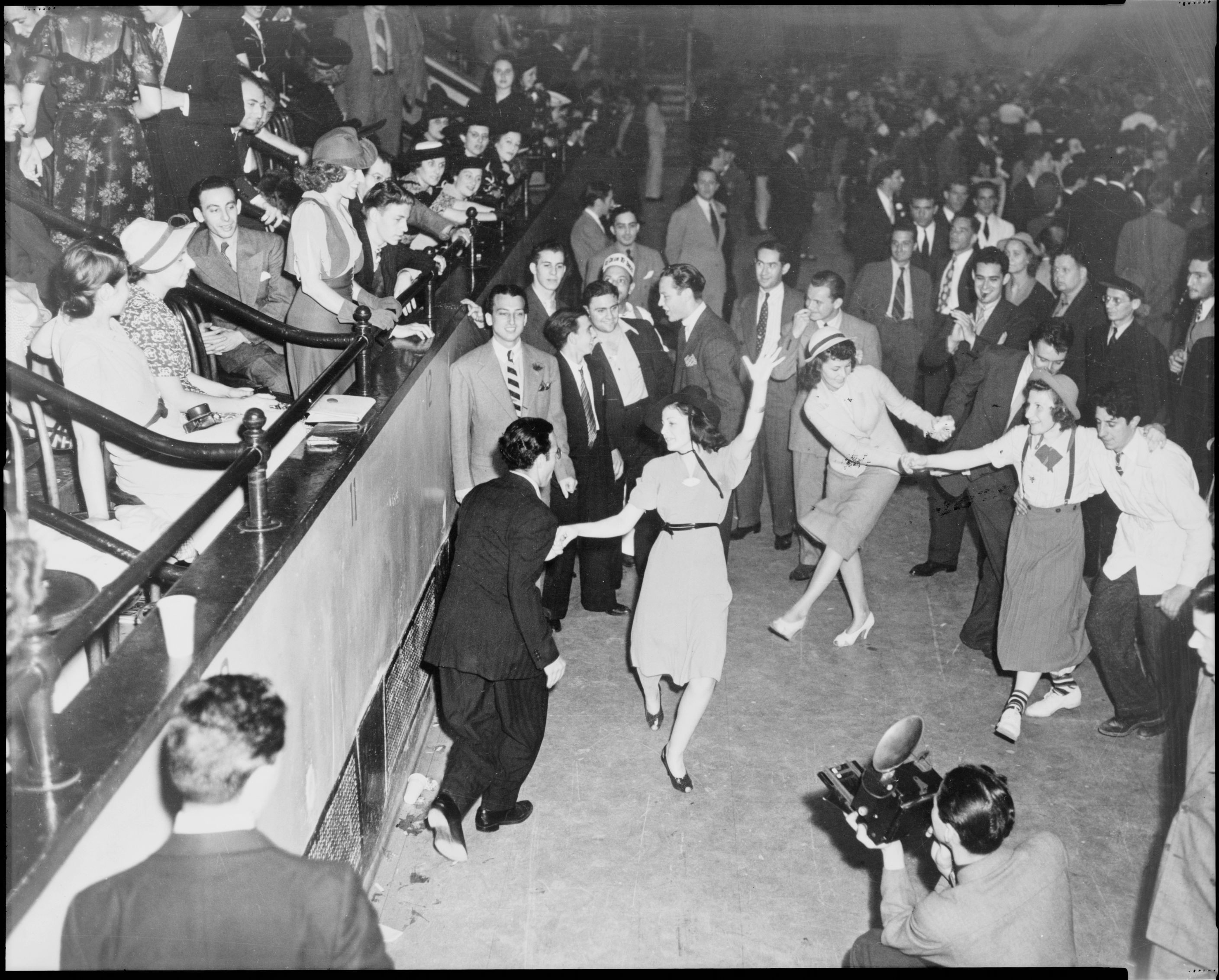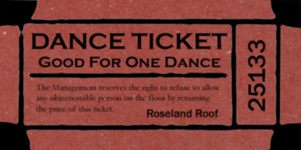Why Men in the 1920s Paid Women for Spins Around the Dance Hall
For 10 cents, male patrons could hire taxi-dancers and try out the upper-class hobby of ballroom dancing.

Dancers at a New York dance hall in 1938. (Photo: Alan Fisher/Public Domain)
The taxi-dance hall, an entertainment venue where men could hire women to dance with them for a sum of money, first appeared in San Francisco just over a century ago. Ballroom dancing had previously been a pastime reserved for the elite, but in this new style of dance parlor, working-class people began twirling around the room as well.
But taxi-dance halls had very little in common with the stuffy balls favored by the upper-classes: they were informal and boisterous, and sold dance tickets at a cost of around 10 cents each. By the 1920s and ’30s, the masses had became hooked. In New York City alone, it was estimated that there were over 100 taxi-dance halls by 1931, serving up to 50,000 male patrons each week.

Taxi-dancing attracted a diverse crowd of entertainment-goers that previously did not have the access or ability to dance with women at a ballroom. In 1932, Paul G. Cressey of the University of Chicago observed that the taxi-dance halls were patronized by those on the outer edges of the social sphere: immigrants, men with disabilities, and elderly men. In a paper entitled “Taxi-Dance Hall: A Sociological Study in Commercialized Recreation and City Life,” Cressey wrote:
“The patrons are a motley crowd. Some are uncouth, noisy youths, busied chiefly with their cigarettes. … Others are middle-aged men whose stooped shoulders and shambling gait speak eloquently of a life of manual toil. Sometimes they speak English fluently. More often their broken English reveals them as European immigrants … Still others are dapperly dressed little Filipinos.”
In other words, the taxi-dance halls empowered men who would have otherwise been outcasts.

An artist’s rendering of what a taxi-dance ticket would have looked like. (Photo: James Carroll/Public Domain)
Immigrants from all over flocked to the dance halls to overcome the loneliness in their new lives with the help of the taxi-dancers. In Filipina/o Migration to the United States and the Remaking of Gender Narratives, 1906–2010, Mina Roces writes, “Faced with the grim fate of possibly never finding a life partner, Filipino bachelors competed fiercely for the few Filipinas around. Those who lost this game of high stakes and were desperately lonely frequented the taxi-dance halls and/or visited prostitutes enjoying, albeit briefly, the company of white women.”
The women were known as taxi-dancers because their pay was proportional to the amount of time they spent dancing with customers, as with a cab driver and a passenger. They were themselves not very different from their customers: unmarried, working-class women who were often stigmatized as prostitutes. Many of these women justified their choice of career to those who judged them by noting the comparatively high wages they received as taxi-dancers.
New York’s legendary Roseland Ballroom was one of many taxi-dance halls across America. When the Roseland first opened in 1919, it was a “whites only” venue for people of social standing. Perhaps thanks in part to the increasing popularity of jazz music and the multi-racial nature of the genre’s consumers and creators, as well as its location in populist Times Square, the venue later opened its doors to the working classes, immigrants and people of color.
The taxi-dance pastime wasn’t without its flaws; beyond the obvious comparisons to prostitution, it could be racist at times, with many halls excluding black patrons. Although the taxi-dance was able to bring a previously elitist activity to the masses and the misfits, it was not able to entirely break down racial barriers.
Taxi-dance halls treaded the line between illicit and respectable entertainment, catering to socially-isolated men who would otherwise have been ostracized from public dancing. In San Francisco, the police outlawed the employment of women as taxi-dancers in 1921, and the city’s taxi-dance halls were completely shut down. By 1925, various reform movements had begun across the country in order to close many of the dance halls, and by World War II their numbers had been greatly diminished. In 1952, only 10 taxi-dance halls remained in New York.
Though the tradition hasn’t flourished for decades, neither was it vanquished: taxi-dance halls still exist today, where patrons can hire female employees to dance with them via punch cards or timers.












Follow us on Twitter to get the latest on the world's hidden wonders.
Like us on Facebook to get the latest on the world's hidden wonders.
Follow us on Twitter Like us on Facebook